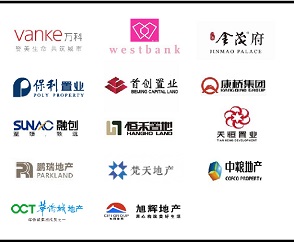ORIA和睿设计:成都万科·城市生长馆
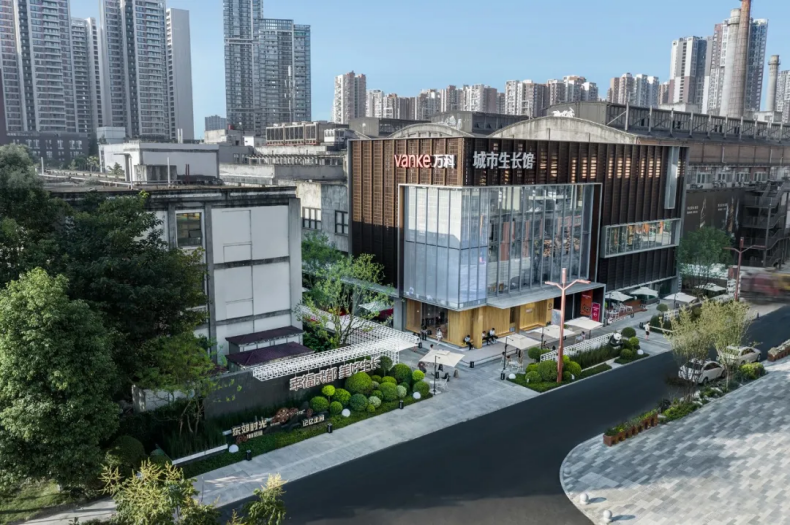
写在前面的话
代谢与层迭,这两个词大概是对城市如何生长的最佳注解。一个城市有机体的不断进化,是建立在人们的日常生活需求不断改变的基础上的,这是空间与生活之间的正向反馈,是过去和未来在当下的结合。作为建筑师,我们希望每个城市更新项目都能展现出这样的画面。
PREFACE
Supersession and superimposition, are probably two best annotations in regards to the growth of an urban space. The evolution of a city is based on the constant change of its inhabitants’daily living requests. It is the positive answer to the space and the lives happening in it, it is also the combination of the past and the future. As architect, we are willing to see scenes as such in every urban renovation project.
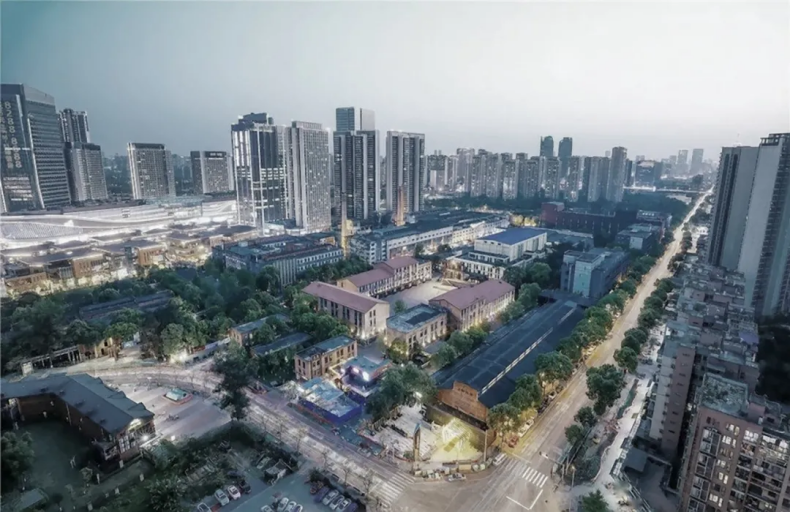
▲东郊记忆整体鸟瞰
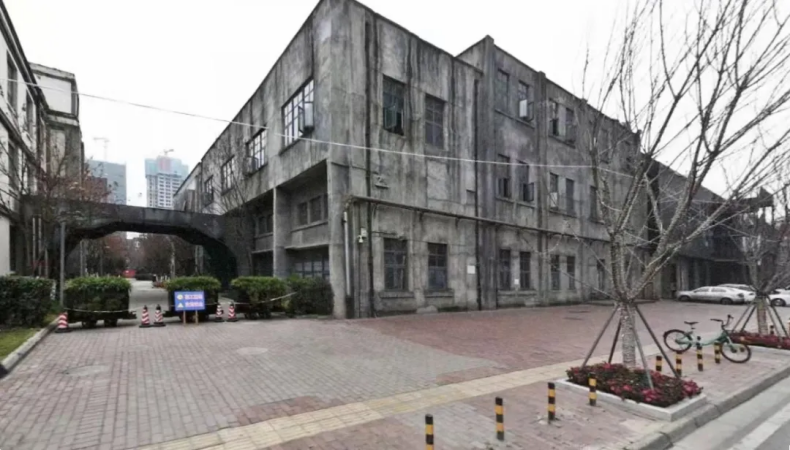
▲改造前原貌
万科·城市生长馆就是这样一个项目。
前身为国营红光电子管厂的成都东郊记忆,是集合音乐、美术、戏剧、摄影等文化形态的多元文化园区,工业遗址主题旅游地。而城市生长馆的载体,则是一栋位于东郊记忆西南角始建于1950年代的不起眼的老旧工业建筑,其面目陈旧,缺少美感,且由不同层高的两个部分组成,立面难以统一,而整个建筑深灰色的色调与东郊记忆园区的统一红砖风格也有较大差异。
Vanke · Urban Vitality Pavilion is transformed from the former government-owned Hongguang Electronic Diode Factory located in Eastern Suburban Memoir in Chengdu. The Memoir is currently a multi-cultural park integrating music, fine arts, drama, photography and other cultural forms, and a tourist destination featuring industrial heritages.The foundation of the pavilion is an outdated 1950s industrial building located on the southwest corner of the site. The original envelope had lost its original aesthetics due to the lack of maintenance. The building was made of two parts with different floor heights, which leads to an ununified façade language. In addition its smoke grey tone had created a huge gap between the building and the rest of the cluster mainly decorated in brown brick.
作为市级文保单位,在2014年以后,东郊记忆建筑群的修缮与改造受到了严格的限制,如有风貌改动,必须保证原建筑外立面工程的可逆性。如何在这样的条件下实现新的功能植入,承载新的城市生活方式,创造一个既有旧时印记又有新意的城市多元复合空间,一个开放而有生命力的场景,是我们所面临的重要课题。
As the cultural heritage site, since 2014 the renovation and fixation of the Eastern Suburban Memoir has been strictly restricted: any adjustments on the facades must be kept reversable. Thus it has become a crucial subject on how to create a vital, superimposed space with the extension of both the old and the new.
01 包裹与透明

▲草图
共存,最重要的一点是在于对建筑本体的留存保护,可能从美学角度来看,原表面斑驳质感过于陈旧。但是基于它的文物保护建筑性质和东郊深厚的在地文化,经过综合评判,可能最好的处理方法就是对其原表皮进行清洗加以维护,然后用一种“玻璃橱窗”的方式去保护和展示它。
This renovation project emphasizes coexistence, the key of which is to preserve and protect the existing building. From an aesthetic perspective, the building's original mottled facade textures might seem to be too old to be retained. Nevertheless, considering its attribute as a listed heritage building and the profound cultural context of Eastern Suburban Memoir, the best renovation solution would be to cleanse and maintain the existing facade, then to install modern display window for the purpose of protection and display.
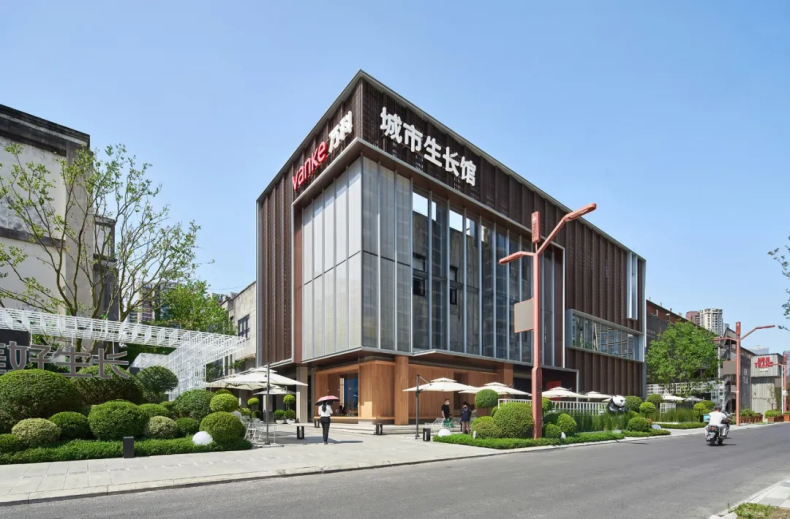
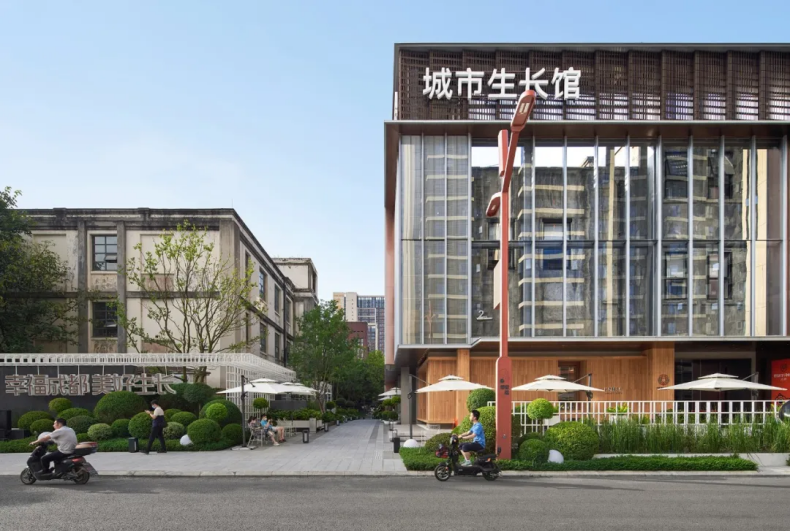
为此,在现存建筑外表面之外我们新建了一个镂空金属幕墙,赋予它新的建筑形象。这个幕墙实际上拥有独立的结构体系,并不和原有建筑结构发生强联系,仅仅与有着局部点对点的搭接关系,也就是说,通过这个外载幕墙结构的处理,我们首先实现了对建筑本体的有效保护 —— 保证了原建筑修缮工程的可逆性。
The perforated metal curtain system was mounted to cover the existing building exteriors, thus creating a new architectural figure.The curtain wall system owns an individual structural system, which leased the rigid connection between itself and the original envelope, instead it connects only at certain structural points. Through the point connection we have created an effective protection to the original envelope and achieved its reversibility as per the requirements.
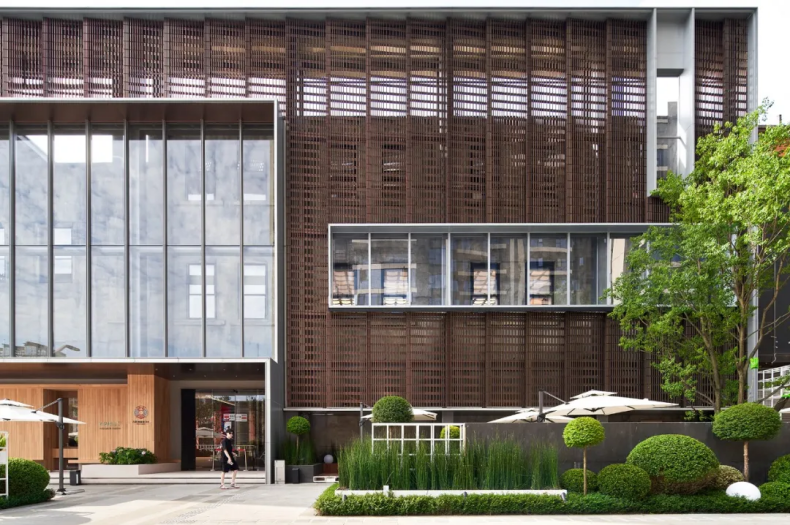
第二点是在于对建筑原风貌的展示,透过这个玻璃和镂空金属格栅组成的幕墙,我们可以很清晰的看到建筑的原表面 —— 历史建筑以一种新的姿态在此地继续生长。
The second point is the presentation of the original architectural language. By using the transparent and perforated material, the visitors could easily grasp the original surface shown behind the additional layer – the history grows in a new container.
02 材质选择和模块幕墙
幕墙外表皮的基本单元是一个20*60的铝格栅,形式如砖,而红砖又是东郊记忆的一个很深厚的文化元素,我们用此表达文化的在地性; 如果从正面观察格栅与格栅之间类似于砖形态的空隙,就可以看见原建筑的斑驳立面,两种不同材质的对比,体现了时间在这座建筑上的流淌。
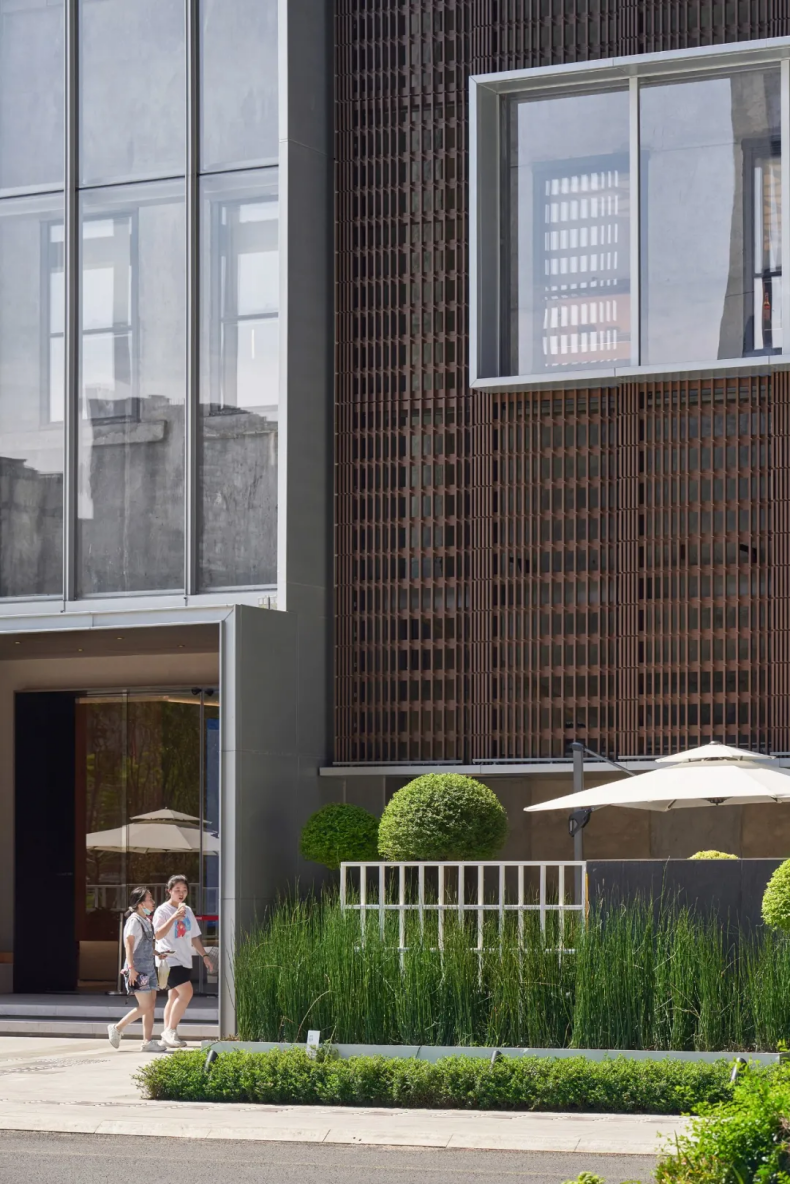
格栅的本体色彩也仿照因年久而微暗的砖色,犹如时间沉淀的体现;因为和建筑主体结构脱开的原因,考虑到各种受力情况,幕墙背后的钢框架不得不做得非常原始粗犷而厚重,我们干脆暴露了它的一部分,使这个代表历史厚重的支撑结构与代表现代工艺的精致格栅产生对比,把一个历史、时代的进程,以建筑的语言展现出来。
The vertical louvres applied the dark brown colour which was a mimic of the colour of the old bricks that reflected the flow of time. Due to the separation between the new envelope and the original building, the structure for the new façade had to be thick enough, which became another signature of the pavilion – the comparison between the thick structure and the delicate louvres had signified the evolution of the history and a special period of time.

考虑到工期和安装的精度问题,所有的格栅都以1.5米*4.2米的大块单元形式在工厂里模块化预制完成,现场只需要拼接即可,有效降低了施工难度,提升了速度。
Considering the construction time and precision, all the louvre units were pre-fabricated as 1.5m x 4.2m modules and installed on site. The method massively increased the construction efficiency, simultaneously minimized the construction difficulties.
03 边界的开放及模糊

▲草图
如果要让空间具有鲜活的生命力,首要任务就是关注近人尺度的设计。在面对道路开放的角部,我们尽可能的打开建筑立面,让外部空间渗透进建筑内部,因为和人的近距离接触,幕墙的细节精度得到了进一步的重视。
To bring the vitality back into the space, the first task of the design was look at the human-scale design. The open corner facing the public road indicates an open architectural envelope that allows the immersion of the outer space into the indoor area. The delicate façade detail is thus revealed due to the close contact with the visitors.
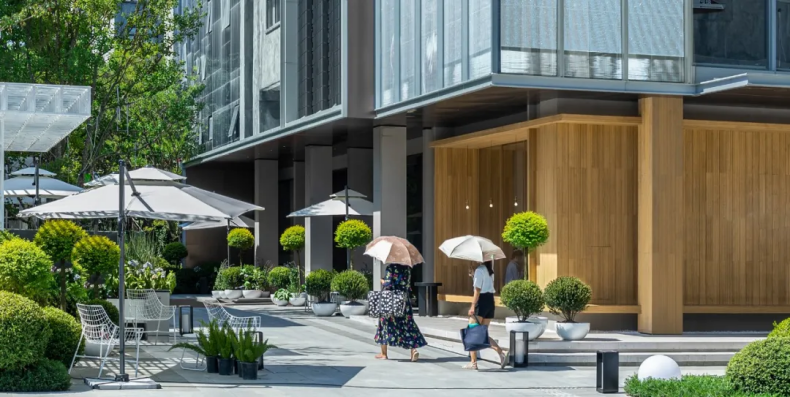
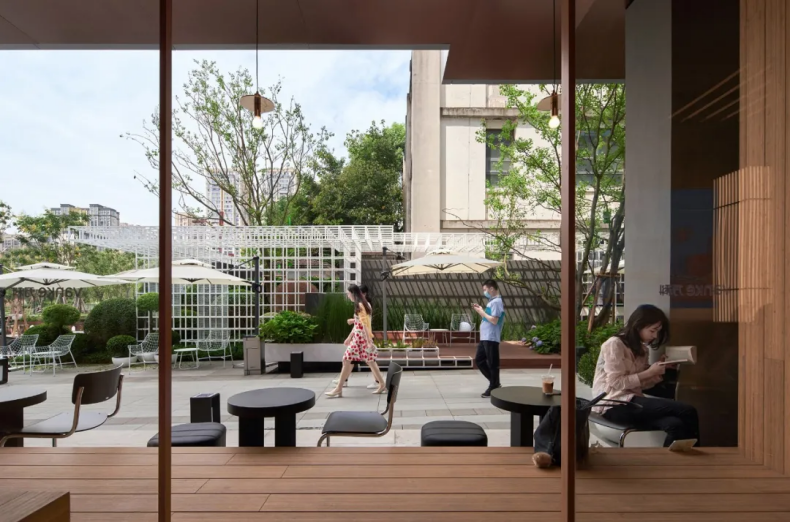
在入口框架部分,为了达到最好的效果,凡是人可触及的内侧部位都采用了密拼开缝的做法,而为满足防水等基本需求,又需要幕墙是密封状态,因此出现了一块幕墙上打胶(顶部和外侧)和密拼(内侧)共同出现的情况,而在顶部,更加上了内部披水板和边缘滴缝做法去保证效果。
At the entrance area, the open seam method was applied on the inner side of the façade. In order to meet the water proof requirements, the façade needs to be sealed, thus glue on the top and outer surface and open seam on the inner surface were applied collaboratively.
At the top of the entrance, the sloped profile and edge gutter were jointly applied to guarantee the visual appearance.
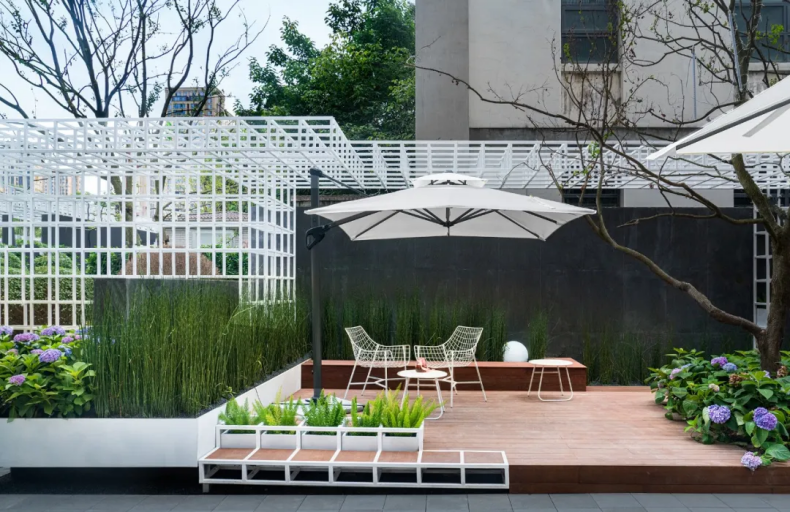
幕墙系统包裹了建筑本体,而景观则对整个场所做了另一层次的包裹。景观设计利用白色框架重新界定和围合空间,有效结合了建筑底层的开放空间,形成内外统一的活动场所。同时利用将各类球形植物组合成高度统一的软性界面,对市政道路形成有效屏蔽,结合建筑半开放的灰空间加上简洁的城市家具,提供了平和轻松的氛围,让整个场地能够很自然地留住过往的人。
The façade system has finished the primary wrap of the original building frame, the landscape in sequence formed the secondary finish. By using white coloured frame, the outer space was reframed and redefined, combined with the ground level open façade, an activity space with ambiguous boundary between inside and outside was hence created. Simultaneously through the additional green interface, the civic utility road was effectively shielded outside of the activity space. The semi-open transitional space, together with the minimalism street furniture, has provided a peaceful space that is relaxing enough to stop people passing-by.

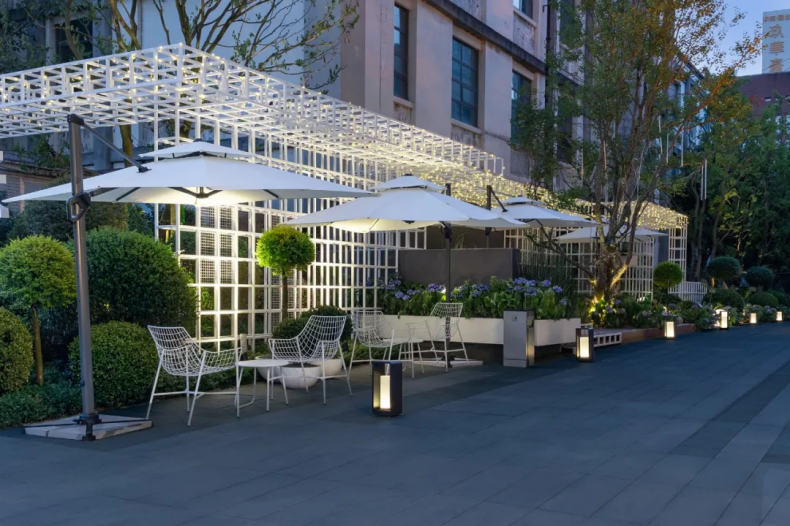
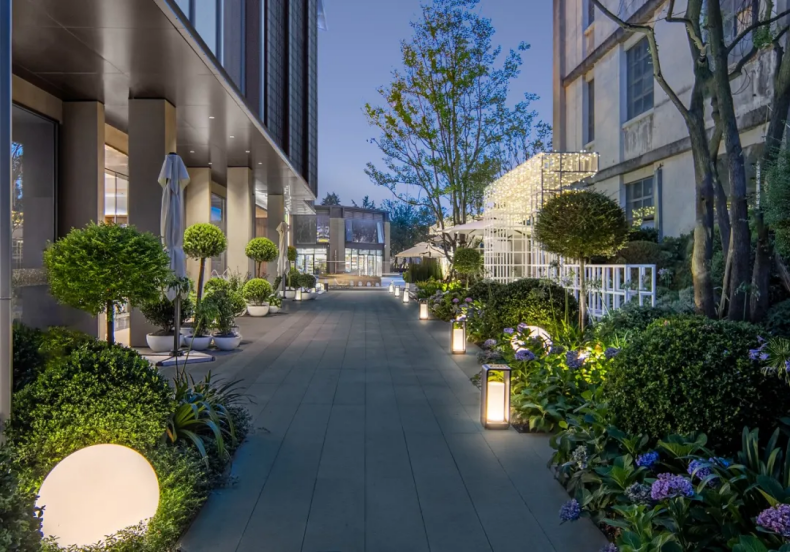
入夜,灯光的加入,为建筑和景观营造出更加温和的感觉,让街道回归,还给它本应承载的停留、栖坐与交谈,一种从前至今的成都巴适。
At night, with the join of the warm light, the architecture shows a comfortable atmosphere together with the landscape, that brings back the feeling of the old Chengdu street, on which you can stop-by, sit and chat.
04 展示:生长的内容和面对未来的故事
我们在一个重要的历史街区做一个场馆,并不是要以一个孤立于他者的姿态去做一个特别耀眼的建筑,相反,我们更希望它的设计和建设,能与“生长”这样一种理念和精神相契合,这不单单应是建筑的体现,也是内容运营的目标。
正如前文所述,要创造一个旧印与新意相容的城市多元复合空间。生长的街角,这是我们对于项目的定义之一,既满足了物质生活的需要,也满足了对艺术和自我提高的追求。成为一个在文化基底上诞生的新场所。
To build a pavilion on a significant history site, it would not merely be an outstanding individual existence, on the contrary, we would expect it to `grow` in the urban space, as initially mentioned, to echo the spirit of supersession and superimposition not only in architecture language, but also in business strategies.
The project aims to create a superimposed urban space with the old and the new. The growing corner, defined the basic language of the project. It is growing into a space that was built on the basis of the past culture, a space that meets both the basic life requirements and the pursue of the art and self-improvement.







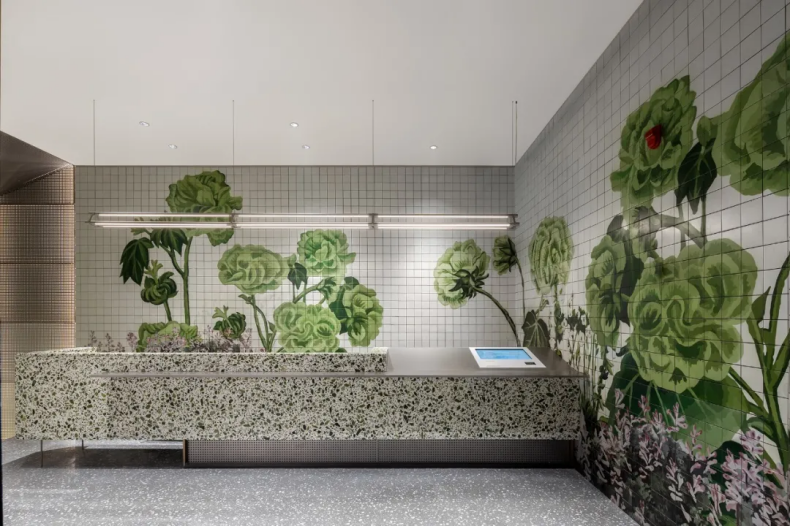

新旧对比,内容置入,建筑内外的新生气息,这一切,都让城市生长馆作为历史建筑重新产生城市生活价值。整体稳重的外立面色调暗含内部的鲜活功能,这就是我们对于东郊这一工业基地的理解,是对过往的尊重,也是对未来的期许 —— 一种历史和现实的共存共生。
The comparison between the old and the new, the intervention of the contents, the refreshed atmosphere in both inner and outer space, all these elements have contributed to the life value of the pavilion, as part of the significant history site on the east side. The solemn façade together with the vital inner space, has formed our understanding towards the renovation of the industrial site- to respect the past and expect the future, a harmony co-existence of the history and reality.
项目名称:万科·城市生长馆
项目地点:四川省成都市成华区东郊记忆路
项目面积:2372㎡
设计时间:2021.4
完工时间:2021.7
建筑设计:上海和睿规划建筑设计有限公司 / 团队:陈涵非、吴文博、郭冬晴、周楚
室内设计:木君设计
景观设计:致澜景观
建筑摄影:存在建筑、LSSP罗生制片、成都万科、致澜景观品牌部

设计腕儿官方微信
010-88600030

